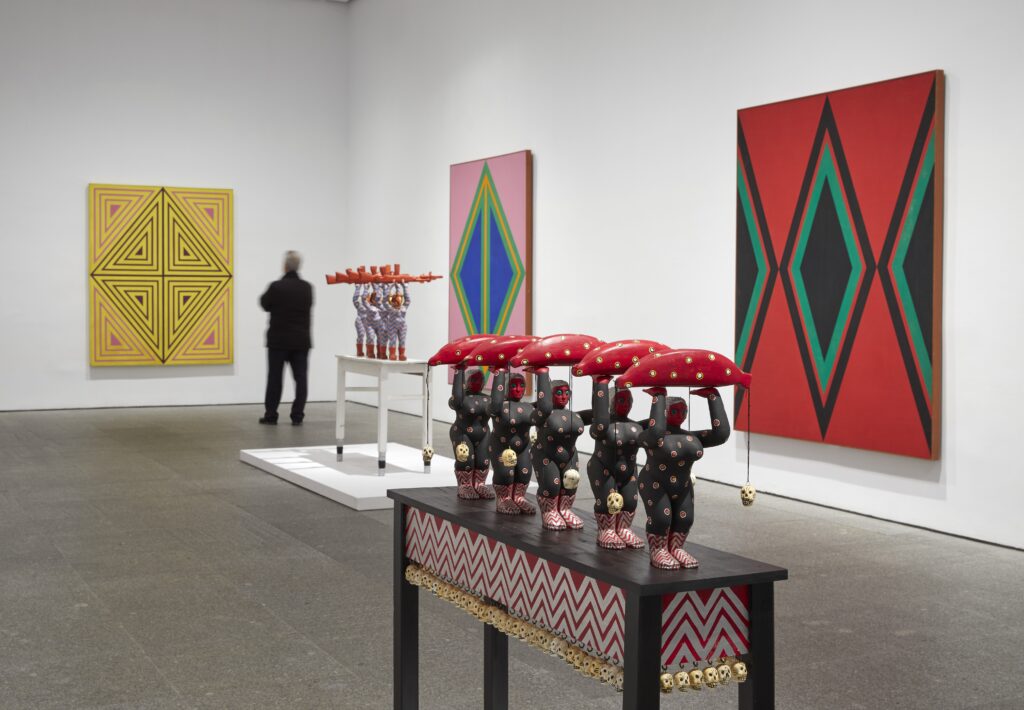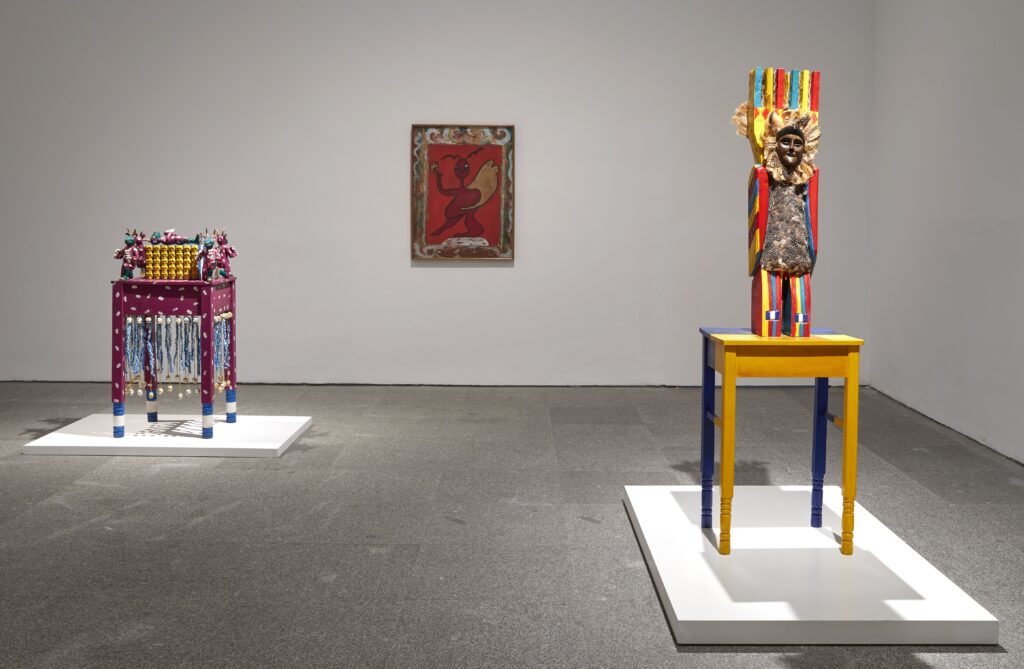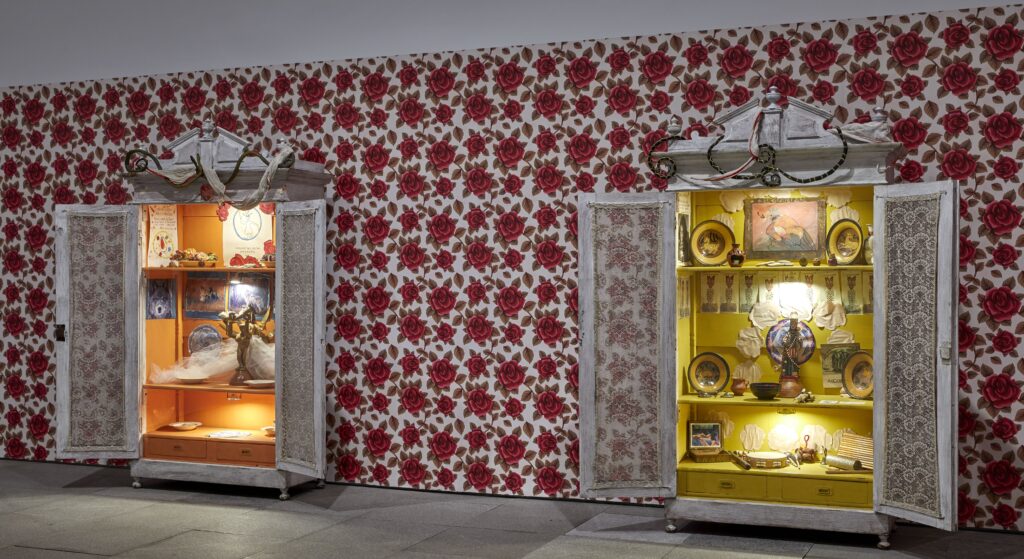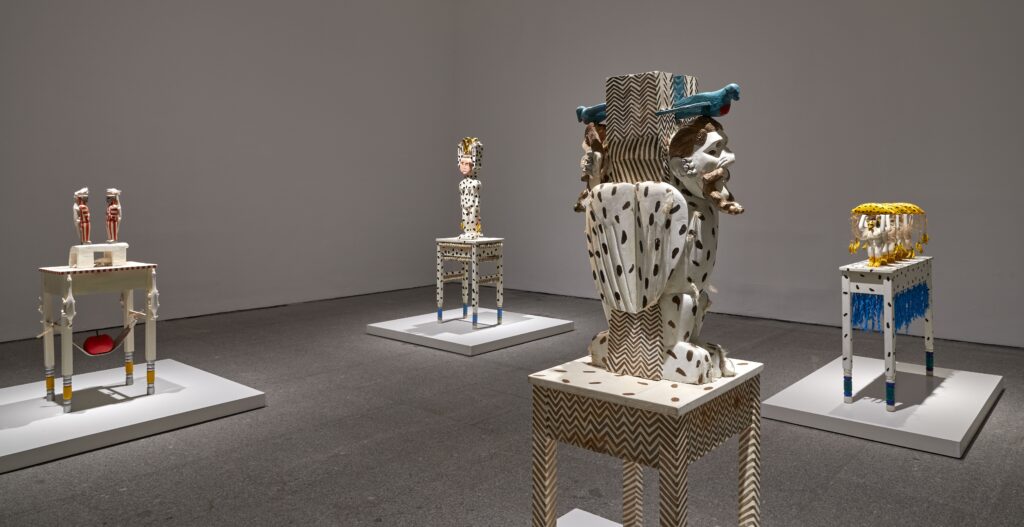Madrid,
His work goes through the artistic evolution in Guatemala in the second half of the last century, but it does not always do so under the same name; One of them was Daisy Rita Rica Dynamite and that is the title that has also been adopted by the sample that is now dedicated to him by the Reina Sofia Museumcurated by Rossina Cazali, and which is her first individual show in Spain.
Margarita Azurdia, a free-spirited artist, lover of games and transgression, was born in the early 1930s and in the 1960s she decided to delve into informalism, calling herself Margot Fanjul. If at first he knew the abstraction that was then developing in California and painted under its premises, later he adopted a geometry inspired by indigenous textile designs and, already in the sixties, more diverse and distant references would gain importance in his work, from Eastern philosophy to space travel, which helped him reflect on human existence from different perspectives. Those were years in which creation was soaked in new forms of spirituality, to which his series of sculptural paintings was no stranger. pole 104 (which earned him an honorable mention at the São Paulo Biennial) and his installation please take off your shoeswhich he presented at the II Coltejer Art Biennial in Medellín: it was a cubicle where the public could take off their shoes to walk on wet sand, an action as simple as it was sufficiently enveloping to transport us mentally to other spaces and times.
In the first half of the 1970s, the sculptural group represented a certain turn in his production. Tribute to Guatemala, which consists of fifty wooden carvings that he commissioned from artisans specialized in religious imagery and that evoke the usual altars in the towns of the highlands of his country. Due to the zoomorphic character of some of its figures and the tropical echo of the clothing of those representing women, this work perfectly symbolizes the essential syncretism in Guatemalan culture.
Right after finishing that series, Azurdia moved to Paris, where she developed poems, drawings and artist books closely linked to her contact with new feminist currents, with body art and postmodern dance. But her European stay was not permanent: eight years later she returned to her origins and, imbued with those influences, she launched the experimental dance collective Creativity Lab together with Benjamín Herrarte and Fernando Iturbide. The way to channel his artistic concerns would, since then, be the body, in his case in relation to rituals and dances of a sacred nature, with nature and the possibilities of personal healing. In the last years of his life (he died in 1998) he carried out altars and paintings that implied his personal offering to the Mother Goddess.

Works derived from his first study of American abstraction have arrived at the Reina Sofía: paintings in which he used a reduced number of tones and concentric ovals. In his case, they did not only have a formal interest, but alluded to cosmology, the nature of the universe and the role that people play in it, the origin of life and the omega point about which Pierre Teilhard de Chardin spoke: the highest point of the evolution of consciousness.
Along with works from the aforementioned series pole 104 (Atom, Totem, Triptych, Lotus Y Person), large sculptural paintings, we will also see marble sculptures articulated from original shapes, including more ovals, recurring throughout his career. Azurdia assembled them using pivots, seeking to grant them movement and that they could rotate.
A different dynamism is implied by the paintings, also large-format, that make up the project geometric: It is about thirty canvases of synthetic composition, based on the conjunction of rhombuses and lines of flat colors and highly contrasting with each other. They are inspired by the tones and shapes of the aforementioned indigenous textiles, but also by contemporary abstraction, which is why, in the sixties and in Guatemala, they represented a turning point and creative modernity.
At that time, a crude stage of the Cold War, and in this country the discourses of a renewed humanism and internationalism were gaining weight; Azurdia, who shared postulates with this second current, did not believe that the cultivation of geometry implied indifference to the reality of the local population, nor that indigenism and abstraction had to be dissociated. right in his Tribute to Guatemalafrom the early seventies, combined both views: the carvings made by artisans, and richly decorated, she intervened with geometric designs and patterns.
Some of its elements are worth emphasizing: boots and rifles have to do with the counterinsurgency war in Guatemala; the banana, with the conflict between this country and the United Fruit Company or with the banana trilogy by Miguel Ángel Asturias; and the female role, with the conception of women by Azurdia as a heroic warrior.

From that period of almost a decade in Paris, we will be able to see artist books at the MNCARS such as meet again. Manageable due to their reduced format, they combine poems and images and in them the artist recalled past experiences, but she also gave an account of her latest searches. meet again, specifically, is structured in three sections and is made up of twenty-five drawings that refer to parts of the body and memories linked to pain, illusion and enigma; With simple, almost minimal lines, the individual and the universal converge in them.
Her childhood revisited her in the drawings that make up memories of old, whose elaboration he proposed as a therapy with which to try to solve past traumas related to affections and diseases. Some of them, the earliest, he carried out in Garrucha (Almería), in 1976, and the last ones already in the nineties.
In works on paper he also turned his interest in dance: the series Des flashbacks of the life of Margarita par elle même points to his investigations into the body and movement, and of a more strictly poetic nature will be 27 notes by Margarita Rita Rica Dynamite (1979) and 26 notes by Margarita Azurdia (1981), in which humor is not lacking.
His last works, which date from the same year of his death, are Altars I Y II and devised them as daisy anastasia. We are talking about cabinets, again handmade, that she intervened with paint, clippings, photos of rituals and ornamental papers and that celebrate a rebirth of herself as an artist who has become a being of light. They contain objects that she used in her offering rites (flowers, candles, musical instruments), carvings of the Mother Goddess and pieces that refer to her body and to that deity, associated with the fertility and energy of women. We will find ovals again, from their original symbolic meaning, and also roses.
The last name he adopted, by the way, Azurdia, this one from anastasiahe appropriated it in memory of a venerated saint in Brazil to whom creative abilities are attributed.

Margarita Azurdia. “Margarita Rita Rich Dynamite”
REINA SOFÍA NATIONAL MUSEUM ART CENTER. MNCARS
St. Elizabeth St., 52
Madrid
From November 24, 2022 to April 17, 2023
OTHER NEWS IN MASDEARTE:
The Reina Sofía presents the first Spanish exhibition of Margarita Azurdia

